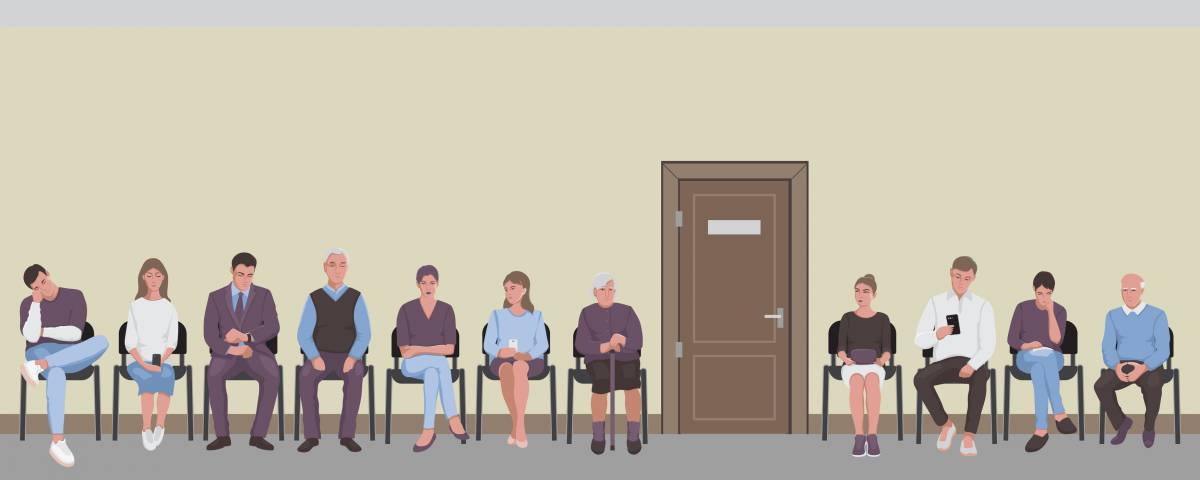NICE poised to endorse apps for low back pain amid pressure to get people 'off NHS waiting lists'
The National Institute for Care and Health Excellence (NICE) is likely to recommend the use of apps to help people with low back pain, apparently – at least in part – because they are waiting so long to see a physiotherapist or other healthcare professional in person.
Mark Chapman, interim director of medical technology and digital evaluation at NICE, said: ‘More than two million people suffer from low back pain each year and there are considerable pressures on NHS services to provide the treatment and care to those needing support with this debilitating condition.’
In draft guidance issued today (13 October), members of an independent NICE committee recommended the use of seven digital technologies for people aged 16 years and over with non-specific low back pain.
Some apps are designed to help people with new back pain, while others are aimed at people who struggled with the condition for more than three months. Some of the apps are intended to help both groups.
The support offered includes
- access to a multidisciplinary team to answer questions or give advice via video or email and messages
- guided exercise advice with video demonstrations
- nudge functions to encourage and remind people to complete tasks, such as filling in questionnaires or doing exercises
Some apps offer access to psychological treatment, such as pain specialists and psychologists, or a programme of video tutorials on managing pain, and mindfulness sessions.
The digital platforms our committee has recommended could provide the NHS with extra capacity to get those affected off waiting lists, which vary in length across the country, and into treatment [Mark Chapman, NICE]Aim to reduce waiting lists for physiotherapy
The draft recommendation on the digital platforms aims to reduce inequalities in accessing musculoskeletal services across the country. It is hoped the innovations will help reducing waiting lists, the number of physiotherapy or GP appointments, the use of medication and the potential need for surgery.
The technologies – which are web-based applications and digital platforms – can be used by NHS patients while further evidence is generated during the next three years to evaluate their effectiveness, from both a clinical and cost perspective. Evidence will be generated in areas such as how long people use the apps before they feel better to return to their normal activities.
Patients would be assessed by a GP or other healthcare professional before they could be offered the digital treatments. Some apps provide initial triage and assessment making it possible for people with symptoms of low back pain to self-refer to the platforms as an additional support to non-pharmacological treatment.
Mr Chapman added: ‘The digital platforms our committee has recommended could provide the NHS with extra capacity to get those affected off waiting lists, which vary in length across the country, and into treatment.
‘We believe these technologies have the potential to offer value for money for the taxpayer, while offering people with low back pain quicker access to get the care they need at a time and place of their choosing.’
Low back pain is rife
According to the NHS Long Term Plan, low back pain is the biggest cause of disability. Musculoskeletal conditions account for almost one GP consultation in three (30 per cent), while, according the UK Health Security Agency, more than nine million people live with long-term back pain in England alone.
Backing from health minister
Health minister Will Quince said: ‘These apps are yet another example of how technology can be used help patients get the care they need, when they need it. They offer a range of services which will allow patients to manage lower back pain from the comfort of their homes by improving access to musculoskeletal services – which will form a key part of our Major Conditions Strategy.
'This will help to reduce pressures on the NHS and can help to cut waiting lists - one of the government’s top priorities – and will help people to live happier, healthier lives.'
The technologies recommended in today’s draft guidance can be used once they have appropriate regulatory approval and meet the standards set out in NHS England’s Digital Technology Assessment Criteria.
A consultation on the recommendations at nice.org.uk will run until 25 October 2023.
Author: Ian A McMillanShare it with















